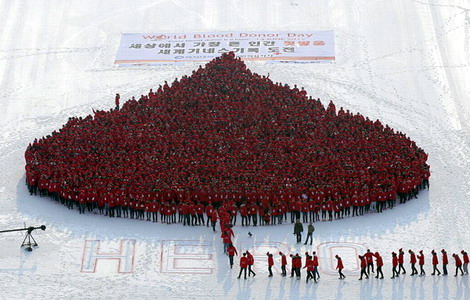Challenges of the changing labor market
Updated: 2012-02-29 09:47
By Zhu Jin (China Daily)
|
|||||||||||
Once again after Spring Festival, the world's most populous country has faced a shortage of migrant workers.
According to media reports, the shortage this year not only happened in the east coast export-processing areas, such as the Pearl and Yangtze river deltas, but also in less developed areas, such as the Xinjiang Uygur and Inner Mongolia autonomous regions.
Even in the provinces that traditionally export labor to other areas, such as Henan province, the biggest source of labor in China, the labor supply can barely meet the demand. One local newspaper in Henan reported on Feb 8 that even after raising wages by 10 percent, companies still faced a shortage of workers. There was a similar situation in Anhui, Sichuan and Hunan provinces, which all used to provide labor to the east coast.
Lu Feng, professor of economics at the National School of Development of Peking University, believes the shortage is a sign of a structural adjustment in China's employment market.
In recent years, the first-generation migrant workers have been retiring and returning to their hometowns. The new generation of migrant workers that are replacing them have higher job expectations, and want higher wages and more career development, neither of which can be easily met by the traditional low-end manufacturing employers. As a result, there is a shortage of manufacturing labor accompanied by rising labor costs.
The increase in labor costs in China may even influence other countries' monetary policy through the global trade system. A recent article in the Wall Street Journal was titled: "Rising Chinese pay toughens Fed's job".
Statistics show the US imported $399 billion of Chinese goods in 2011, 10 times the amount in 1994. However, over the past 15 years, US inflation has been remarkably quiescent and its core consumer-price index, which excludes food and energy, has risen only 2.1 percent a year on average.
But with wages rising in China, the cost of China-made goods has begun to go up.
China is still battling high inflation. Wang Tongsan, director of the Institute of Quantitative and Technical Economics at the Chinese Academy of Social Sciences, said: "Inflation is still the most important problem in China, and it is going to be pushed by rising costs, labor costs in particular."
China has the largest number of new job seekers annually, and as the world's largest developing country it has the largest number of rural laborers to be transferred into non-agricultural sectors.
In 1985, there were only 60 million migrant workers, by 2005 the number had soared to over 200 million and last year the number of migrant workers had risen to 254 million. In the 1980s, agricultural labor accounted for 70 percent of the working population, now it accounts for only 35 percent. But the rate at which agricultural workers become urban workers will slow in the future, further tightening the labor supply in many Chinese cities.
Besides the long-term trend of a slowing rural-urban transfer of labor, some economists also attribute the current shortage of migrant workers to China's economic slowdown.
Song Guoqing, a professor in economics at the National School of Development of Peking University, said the growth in migrant workers has a clear connection with the nation's macroeconomic cycle. In years of high economic growth and inflation, more rural workers seek work in urban areas, while in years of tightening policy and slow growth such migration slows.
The recent migrant-worker shortage has come as the economy's growth rate slows. But if urbanization is pushed too quickly it will lead to a lack of agricultural workers and inflation caused by the soaring prices of agricultural products.
The country's aging population is another challenge, as it is predicted that China's demographic dividend will end soon.
China's support ratio - the effective number of producers relative to the effective number of consumers - is expected to decline between 2010 and 2050, as a larger share of the population reaches old age. China is projected to experience a net annual decline in its support ratio that will depress annual per capita growth by 0.4 percent in the absence of offsetting changes.
To meet the challenges of its aging population, policymakers need to ensure that the working-age population is supported by robust job creation and rising labor productivity. It should also dip into its swelling coffers to finance pensions and healthcare to ease the burden on families supporting parents and grandparents, and help people provide for their retirement.
Otherwise, "workers may have to set aside as much as 25 percent of their wages to support their old age", according to the research by Heiner Flassbeck, the director of the division on globalization and development strategies at the United Nations Conference on Trade and Development.
The aging population and migrant workers shortage will become two important challenges for China in the future and the government should carefully adjust the economy to meet these challenges.
The author is a writer with China Daily.
Related Stories
Small businesses struggle with labor shortage 2011-08-07 21:00
Labor shortage reflects shifting situation 2011-02-19 18:51
Migrant worker shortage good phenomenon 2011-02-18 11:21
How to tackle labor shortage 2011-04-26 08:00
- High-emission vehicles banned and fined in Beijing
- Business lawsuits in sharp increase in China
- Wealthy residents favor yuan in 2012
- China investment set to increase
- Iron ore prices 'to weaken'
- ZTE to expand mobile phone business overseas
- Asset approval shake-up begins
- Foreign cars may be shut out of govt fleet








